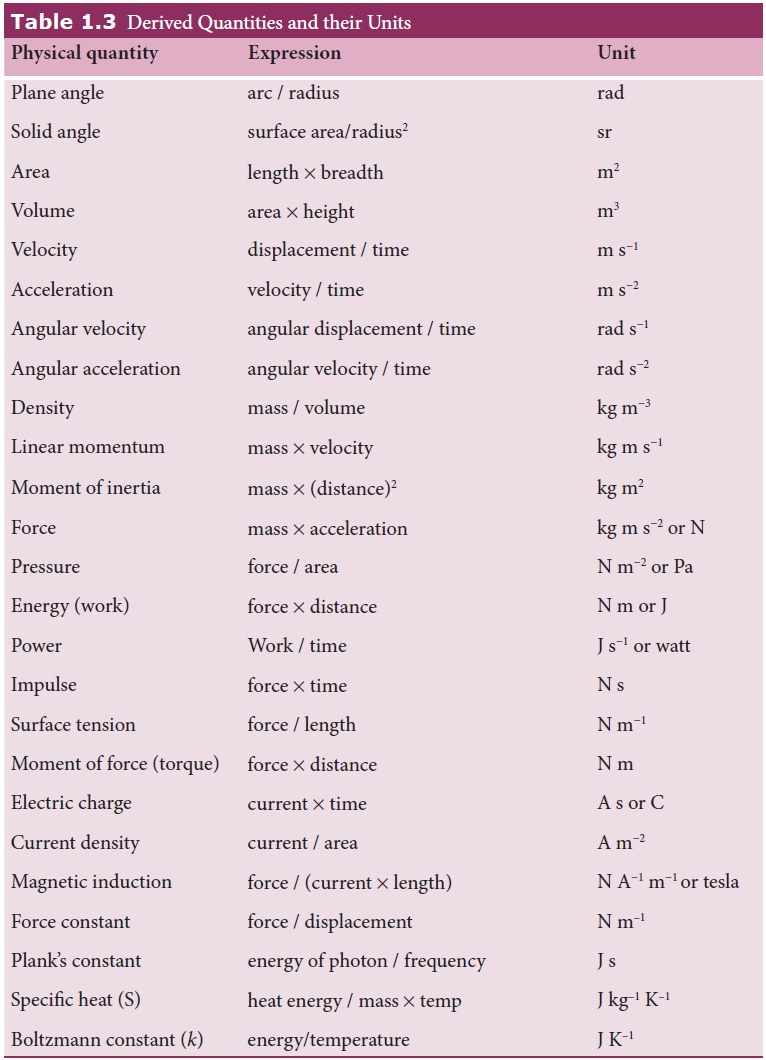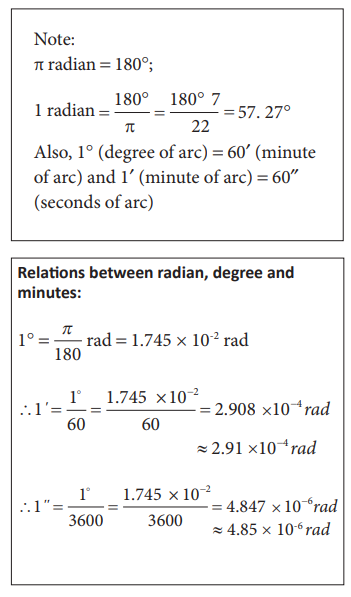Definition and Types of Physical Quantity, Definition and Types of Unit, Different types of Systems, SI unit System - Measurement | 11th Physics : UNIT 1 : Nature of Physical World and Measurement
Chapter: 11th Physics : UNIT 1 : Nature of Physical World and Measurement
Measurement
MEASUREMENT
The
comparison of any physical quantity with its standard unit is known as
measurement.
Measurement
is the basis of all scientific studies and experimentation. It plays an
important role in our daily life. Physics is a quantitative science and
physicists always deal with numbers which are the measurement of physical
quantities.
“When
you can measure what you are speaking about and can express it in numbers, you
know something about it; but when you cannot express it in numbers, your
knowledge is of a meager and unsatisfactory kind” - Lord Kelvin
Definition
of Physical Quantity
Quantities
that can be measured, and in terms of which, laws of physics are described are
called physical quantities. Examples are length, mass, time, force, energy,
etc.
Types of Physical Quantities
Physical
quantities are classified into two types. There are fundamental and derived
quantities.
Fundamental or base quantities are
quantities which cannot be expressed in terms of any other physical quantities.
These are length, mass, time, electric current, temperature, luminous
intensity and amount of substance.
Quantities that can be expressed in
terms of fundamental quantities are called derived quantities. For example, area, volume, velocity, acceleration, force.
Definition
of Unit and its Types
The
process of measurement is basically a process of comparison. To measure a
quantity, we always compare it with some reference standard. For example, when
we state that a rope is 10 meter long, it is to say that it is 10 times as long
as an object whose length is defined as 1 metre. Such a standard is known as
the unit of the quantity. Here 1 metre is the unit of the quantity ‘length’.
An arbitrarily chosen standard of
measurement of a quantity, which is accepted internationally is called unit of
the quantity.
The
units in which the fundamental quantities are measured are called fundamental or base units and the units of measurement of all other physical
quantities, which can be obtained by a suitable multiplication or division of
powers of fundamental units, are called derived units.
Different
types of Measurement Systems
A
complete set of units which is used to measure all kinds of fundamental and
derived quantities is called a system of units. Here are the common system of
units used in mechanics:
a. the f.p.s. system is the British Engineering system of units, which uses foot, pound and
second as the three basic units for measuring length,
mass and time respectively.
b. The c.g.s system is the Gaussian system, which uses centimeter, gram and second
as the three basic units for measuring length, mass and time respectively.
c. The m.k.s system is based on metre, kilogram and second as the three basic units
for measuring length, mass and time respectively.
SI unit System
The
system of units used by scientists and engineers around the world is commonly
called the metric system but, since 1960, it has been known officially
as the International System, or SI (the abbreviation for its French name,
Systeme International). The SI with a standard scheme of symbols, units and
abbreviations, were developed and recommended by the General Conference on Weights
and Measures in 1971 for international usage in scientific, technical,
industrial and commercial work. The advantages of the SI system are,
i.
This
system makes use of only one unit for one physical quantity, which means a
rational system of units
ii.
In
this system, all the derived units can be easily obtained from basic and
supplementary units, which means it is a coherent system of units.
iii.
It
is a metric system which means that multiples and submultiples can be expressed
as powers of 10.
In
SI, there are seven fundamental units as given in Table 1.2

Triple point of water is the temperature at which saturated
vapour, pure and melting ice are all in equilibrium. The triple point
temperature of water is 273.16K
Table
1.3 lists some of the derived quantities and their units.


Related Topics